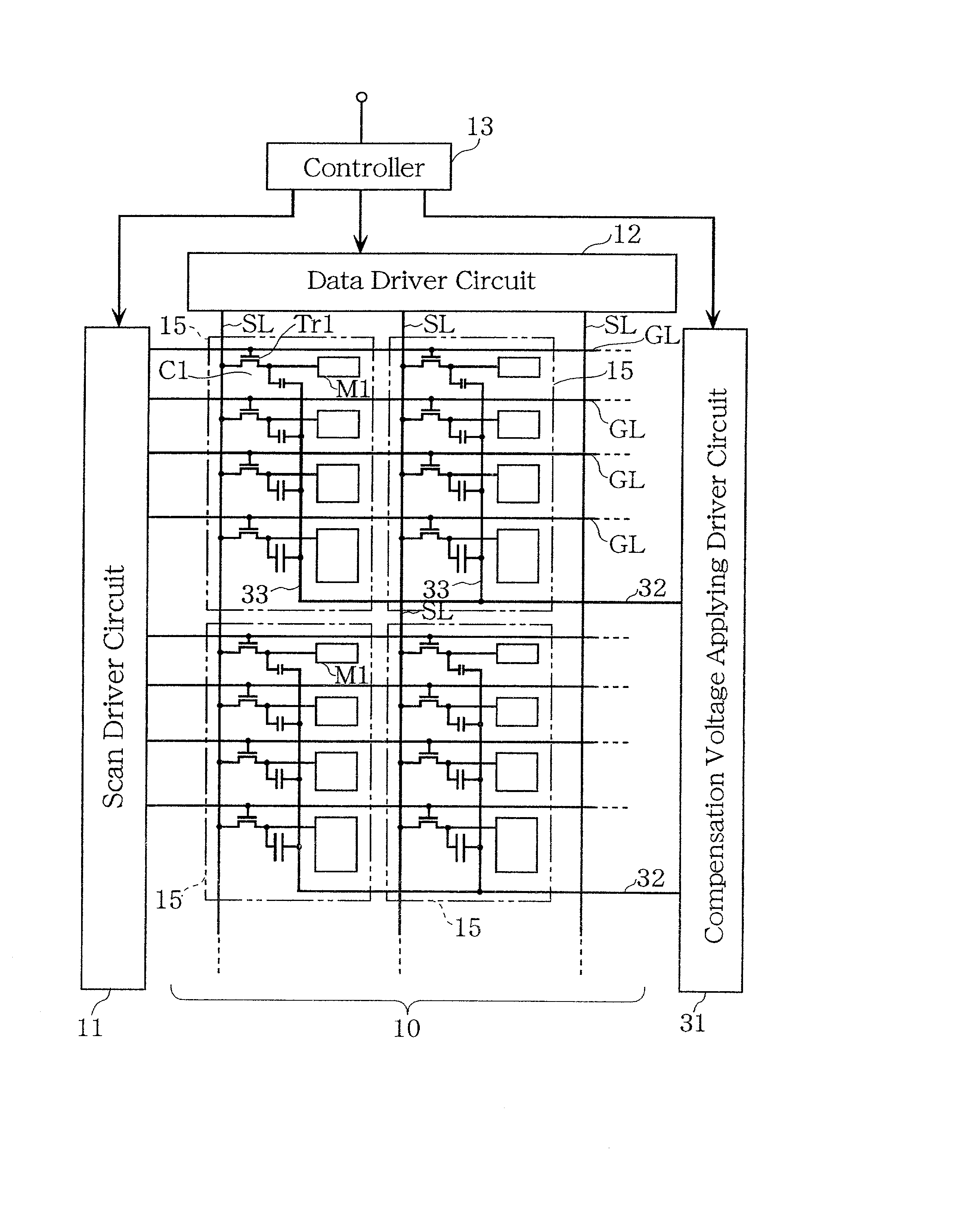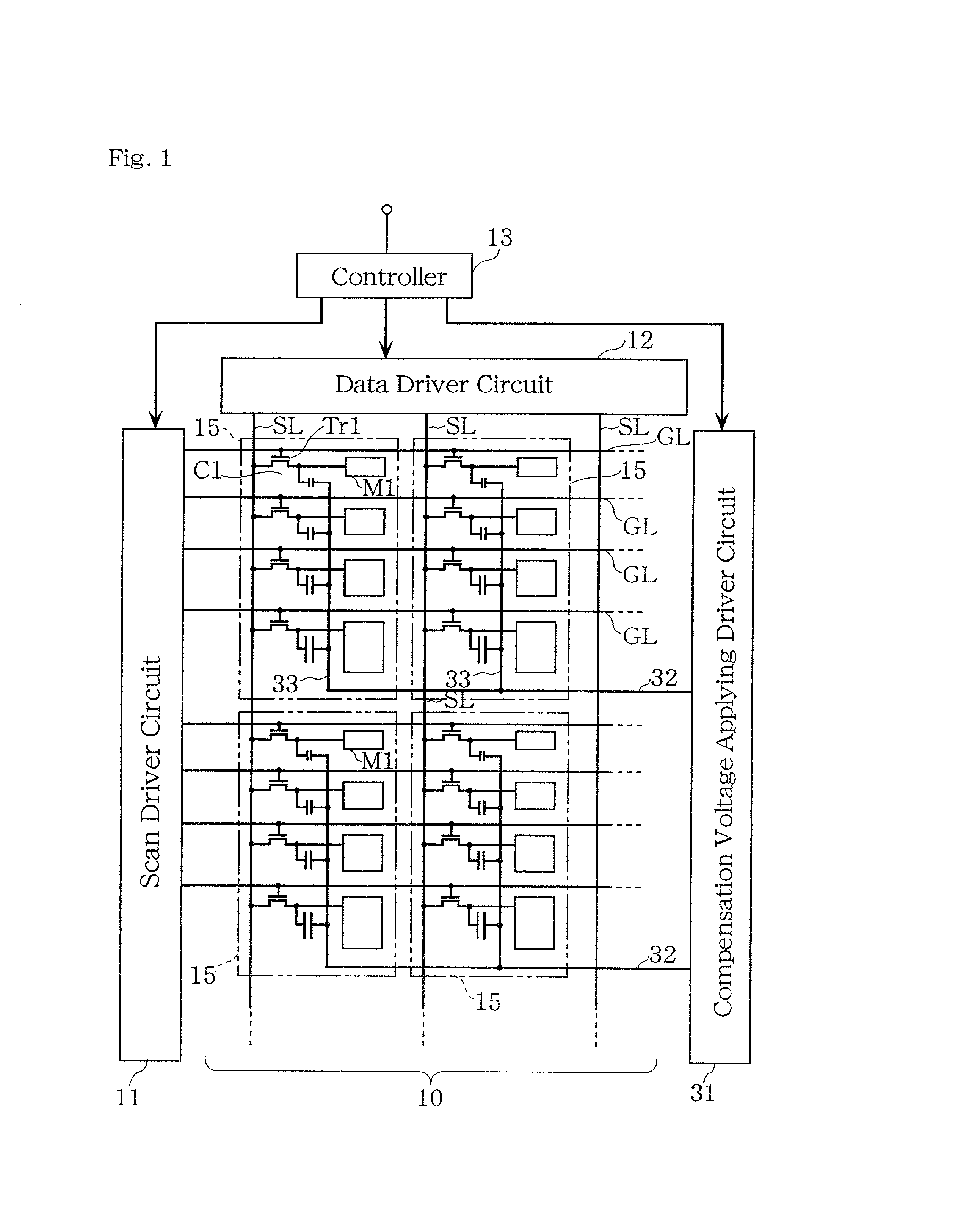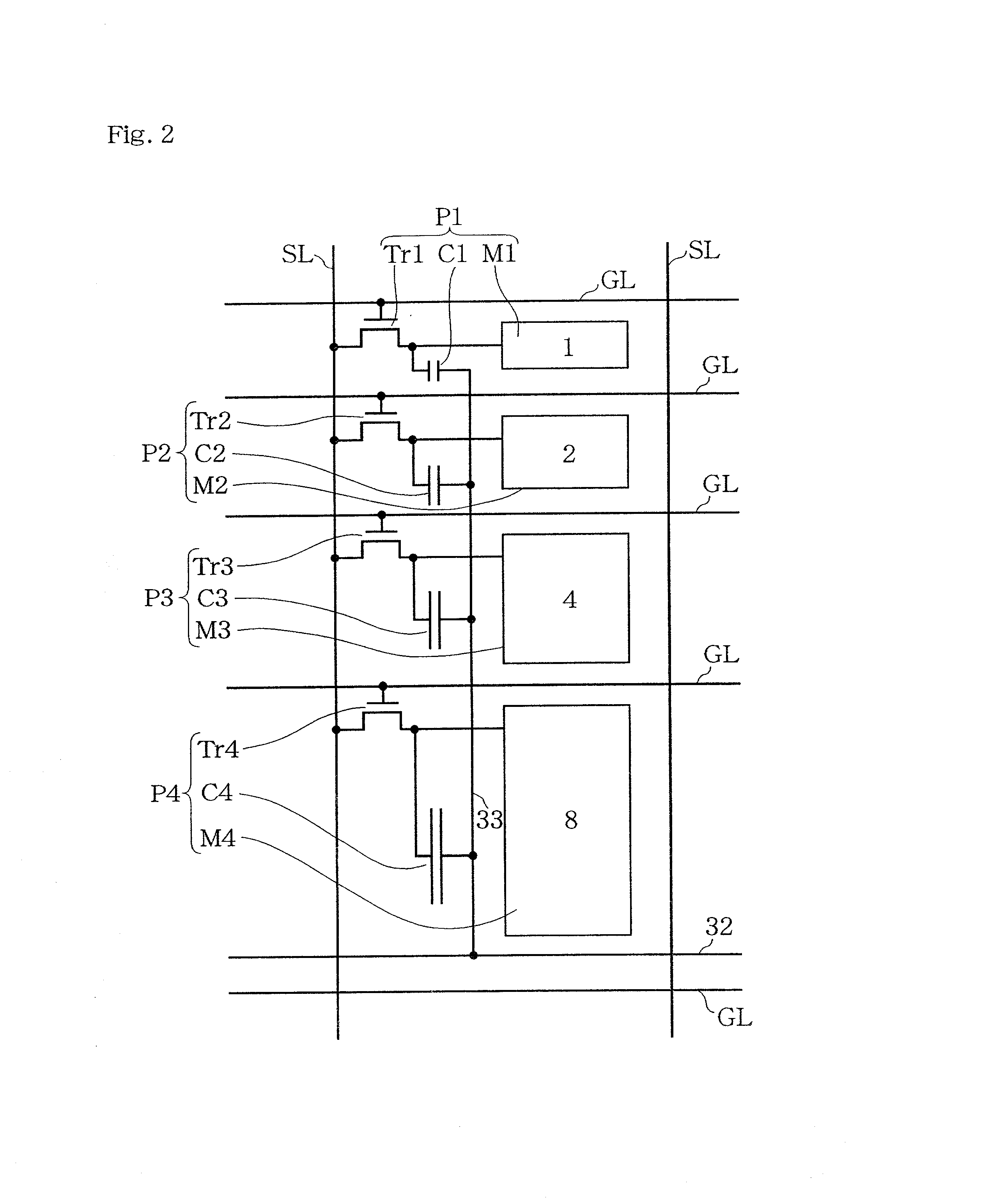Liquid crystal display device, electroluminescent display device, method of driving the devices, and method of evaluating subpixel arrangement patterns
a technology of electroluminescent display and liquid crystal display, which is applied in the direction of static indicating devices, identification means, instruments, etc., can solve the problems of high manufacturing cost, insufficient speed of data driver circuit, and significant increase in power consumption, so as to reduce power consumption and reduce power consumption of peripheral driver circuits , good image quality
- Summary
- Abstract
- Description
- Claims
- Application Information
AI Technical Summary
Benefits of technology
Problems solved by technology
Method used
Image
Examples
embodiment 1
[0148]FIG. 1 shows a circuit diagram of a liquid crystal display device according to Embodiment 1 of the present invention. FIG. 2 shows a circuit diagram illustrating the configuration of a unit pixel. This liquid crystal display device is of a digital driving system type by which gray scale display is performed using a digital image signal. The digital image signal have 4-bit data format. The device is of an active matrix type and is capable of displaying 16 gray levels. Referring now to FIGS. 1 and 2, an example of the specific configuration of the device is discussed below. FIG. 1 illustrates a liquid crystal display unit 10 comprising a plurality of unit pixels 15 arranged in a matrix configuration, a scan driver circuit 11, a data driver circuit 12, a controller 13, and a compensation voltage-applying driver circuit 31 for supplying a compensation voltage signal to voltage controlling capacitor lines 32.
[0149]The liquid crystal display unit 10 has a plurality of source lines (...
embodiment 2
[0173]Embodiment 2 is characterized in that, in a liquid crystal display device according to the foregoing Embodiment 1, the capacitance values of the voltage controlling capacitors are optimized, and the voltage amplitude of the scanning signal is minimized within the range in which the liquid crystal can be driven, in order to achieve a further reduction in power consumption. The details are given below.
(1) Optimization of Voltage Controlling Capacitance
[0174]In a liquid crystal display device according to Embodiment 2, the voltage controlling capacitance Cc is determined by the following Equation (1):
Cc={(Vbias / Vepp−Vbias)}·(Clc+Cgd) (1)
[0175]In Equation (1) above, Vepp denotes the amplitude of the compensation voltage, Vbias denotes the amount of variation of the pixel voltage caused by the variation of the compensation voltage, and Clc denotes the liquid crystal capacitance in each subpixel, and Cgd denotes the parasitic capacitance of the transistor.
[0176]The introduction of ...
embodiments 1 and 2
Supplementary Remarks for Embodiments 1 and 2
[0187]The liquid crystal display devices according to the above Embodiments 1 and 2 may be suitably applied to both transmissive and reflective type liquid crystal display devices. In particular, in cases of reflective type liquid crystal display devices, it is possible to provide large subpixel regions by disposing source lines SL, gate lines GL, pixel transistors Tr1 to Tr4, and voltage controlling capacitors C under the reflective pixel electrodes.
[0188](2) In the above-described embodiments, the scan driver circuit 11 is formed of polycrystalline silicon and the data driver circuit 12 is formed of single crystal silicon, but the present invention is not limited thereto. Both the scan driver circuit 11 and the data driver circuit 12 may be formed of polycrystalline silicon.
[0189](3) The liquid crystal display devices according to the present invention may be suitably applied to display devices for information terminal devices such as m...
PUM
 Login to View More
Login to View More Abstract
Description
Claims
Application Information
 Login to View More
Login to View More - R&D
- Intellectual Property
- Life Sciences
- Materials
- Tech Scout
- Unparalleled Data Quality
- Higher Quality Content
- 60% Fewer Hallucinations
Browse by: Latest US Patents, China's latest patents, Technical Efficacy Thesaurus, Application Domain, Technology Topic, Popular Technical Reports.
© 2025 PatSnap. All rights reserved.Legal|Privacy policy|Modern Slavery Act Transparency Statement|Sitemap|About US| Contact US: help@patsnap.com



